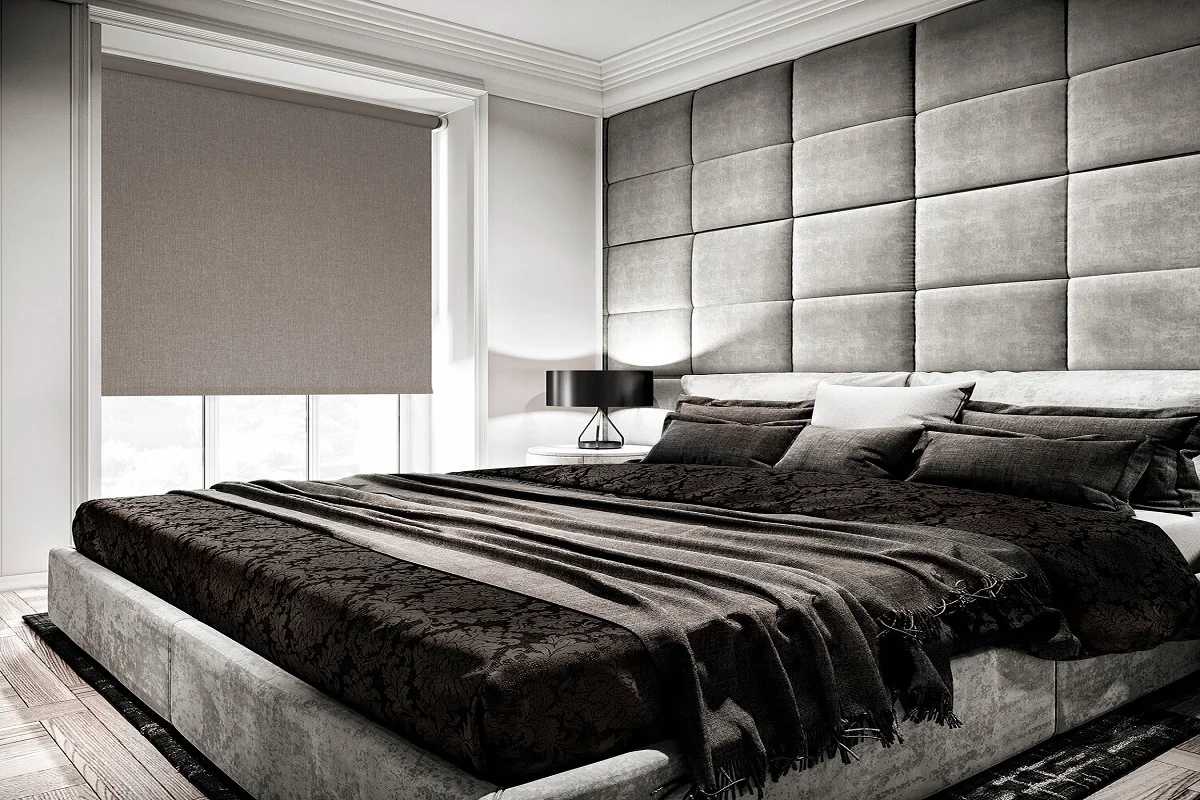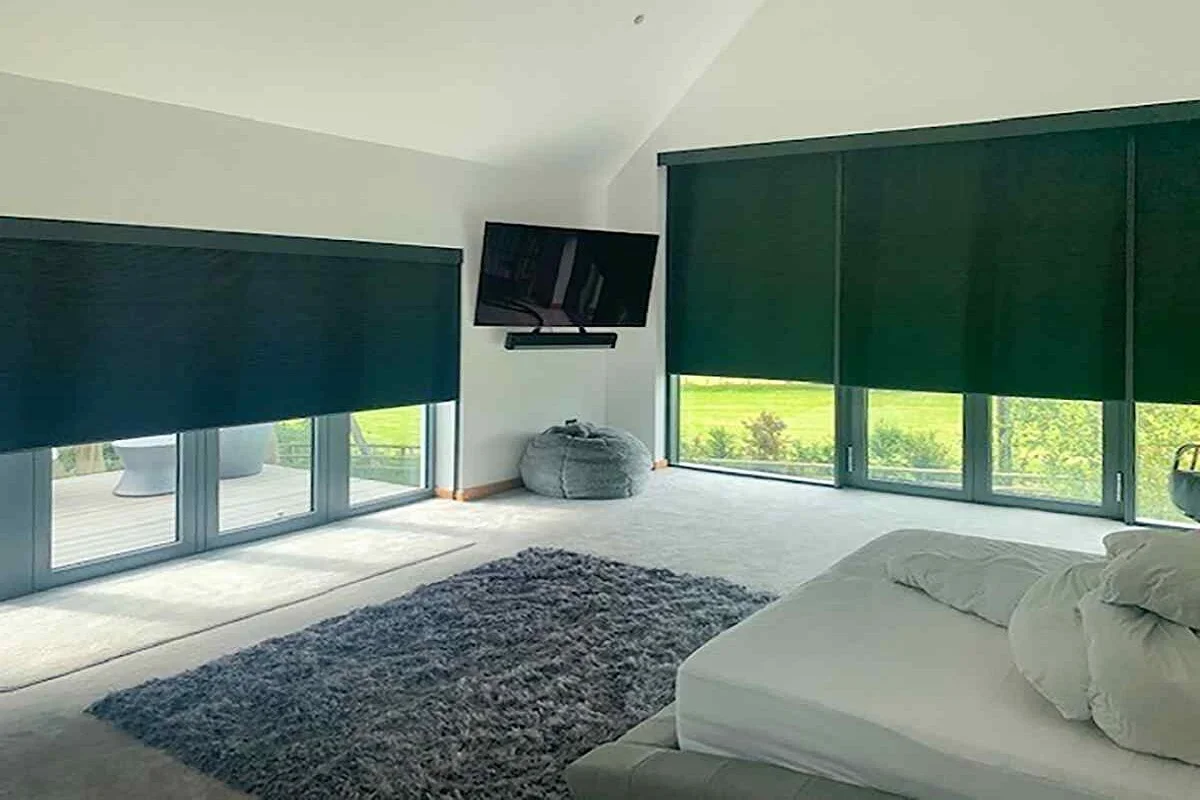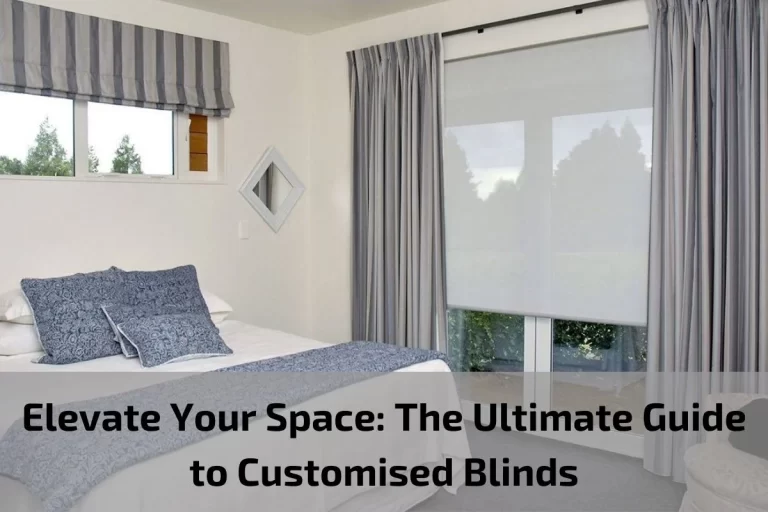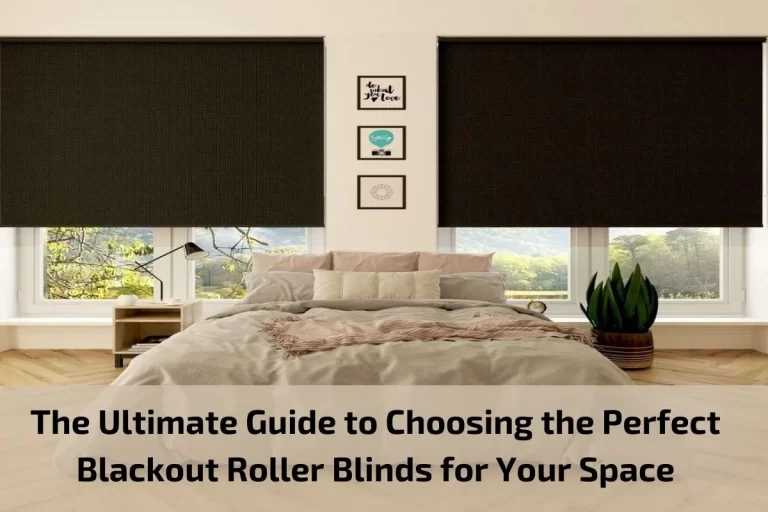In the world of interior design, the allure of aesthetic appeal often takes centre stage, captivating our senses with visually pleasing elements. However, there exists a realm where functionality seamlessly intertwines with style, offering a practical solution that goes beyond mere appearances. This is where blackout blinds emerge as silent heroes, transforming spaces into sanctuaries of comfort and tranquillity.
Beyond their visual elegance, blackout blinds stand as a testament to the marriage of form and function. These window coverings are designed with a purpose — to block out unwanted light and provide an unparalleled level of privacy. As we delve into the practicality of blackout blinds, we unravel the layers of benefits that extend far beyond the surface, offering homeowners a versatile and indispensable addition to their living spaces.
Brief definition of Blackout Blinds
Blackout blinds are a specialised type of window covering designed to effectively block out external light sources. Crafted from light-tight materials and often featuring special coatings or layers, blackout blinds are engineered to create complete darkness when closed. Their primary purpose is to provide an environment free from natural or artificial light, making them particularly popular in bedrooms to promote better sleep by eliminating unwanted light intrusion. These blinds are highly effective in enhancing privacy, managing room temperature, and creating a darkened atmosphere suitable for tasks such as daytime sleeping or Audi
Blackout blinds are window coverings specifically designed to block out external light effectively. Composed of light-resistant materials, these blinds are crafted to prevent sunlight from entering a room, providing a high level of darkness and privacy. The primary purpose of blackout blinds is to create a controlled environment, making them particularly popular in bedrooms, home theatres, and spaces where light control is essential. Unlike traditional blinds, blackout blinds are engineered to minimise or eliminate the penetration of sunlight, offering an ideal solution for those seeking darkness for improved sleep, enhanced privacy, or to reduce glare in various living spaces. Visual presentations
Blackout blinds are window coverings specifically designed to block out external light effectively. Composed of light-resistant materials, these blinds are crafted to prevent sunlight from entering a room, providing a high level of darkness and privacy. The primary purpose of blackout blinds is to create a controlled environment, making them particularly popular in bedrooms, home theatres, and spaces where light control is essential. Unlike traditional blinds, blackout blinds are engineered to minimise or eliminate the penetration of sunlight, offering an ideal solution for those seeking darkness for improved sleep, enhanced privacy, or to reduce glare in various living spaces.
Blackout Blinds in Every Room
Integrating blackout blinds into various rooms of your home can significantly enhance both functionality and ambiance. Beyond their traditional role in bedrooms, blackout blinds have proven to be versatile window coverings suitable for every room. Here’s a look at how these blinds can make a difference in different living spaces:
Bedrooms:
Blackout blinds find their natural habitat in bedrooms. By effectively blocking out external light, they create an optimal sleep environment. The darkness provided by blackout blinds helps regulate circadian rhythms, promoting restful sleep and ensuring you wake up feeling refreshed.
Living Rooms:
In living rooms and entertainment spaces, blackout blinds offer more than just light control. They contribute to creating a cinematic atmosphere during movie nights, reduce glare on TV screens, and provide an overall cosy ambiance. This makes them an excellent addition to spaces where you want to control both natural and artificial light.
Home Offices:
For those working or studying from home, blackout blinds are a valuable asset. They minimise glare on computer screens, creating an environment conducive to focus and productivity. Additionally, by controlling the amount of sunlight entering the room, blackout blinds can help regulate temperature, making the space more comfortable.
Bathrooms:
Privacy is paramount in bathrooms, and blackout blinds offer an effective solution. Whether you’re taking a relaxing bath or getting ready in the morning, these blinds ensure that your privacy is maintained without compromising on style.
Nurseries and Children’s Rooms:
Blackout blinds are a game-changer for parents. They create the perfect nap environment for babies and young children by blocking out sunlight during daytime naps. Additionally, the darkness promotes a calming atmosphere that can aid in bedtime routines.
Home Theaters:
Transform your home theatre experience with blackout blinds. By eliminating external light sources, these blinds enhance the immersive quality of movie nights, allowing you to enjoy films in a dark and cinematic setting.
Dining Areas:
Create a cosy and intimate atmosphere in dining areas by incorporating blackout blinds. These blinds can be adjusted to control the amount of natural light during meals, providing flexibility for different occasions.
Advantages and Disadvantages Blackout Blinds
Advantages of Blackout Blinds:
- Light Control: The primary benefit of blackout blinds is their exceptional ability to control light. They effectively block out external light, providing darkness and privacy, making them ideal for bedrooms, nurseries, and home theatres.
- Improved Sleep Quality: The darkness created by blackout blinds promotes better sleep by helping regulate circadian rhythms. This can be particularly beneficial for those who need to sleep during daylight hours or in urban environments with streetlights.
- Energy Efficiency: Blackout blinds contribute to energy efficiency by acting as insulation. They help maintain a consistent temperature in a room, reducing the need for excessive heating or cooling and potentially lowering energy bills.
- Privacy Enhancement: These blinds offer a high level of privacy, preventing outsiders from peering into your living space. This is especially valuable in urban settings or homes where proximity to neighbours is a consideration.
- Glare Reduction: In rooms with electronic screens, such as home offices or entertainment areas, blackout blinds minimise glare on computers and TVs. This creates a more comfortable environment for work or leisure.
- Versatility in Design: Blackout blinds come in various styles, colours, and materials, allowing for seamless integration into different interior design themes. This versatility ensures that they complement the overall aesthetics of a room.
- UV Protection: By blocking out sunlight, blackout blinds help protect furniture, flooring, and other interior elements from the harmful effects of UV rays, preventing fading and damage over time.
Disadvantages of Blackout Blinds:
Limited Natural Light: While effective at blocking out light, blackout blinds can also limit the entry of natural light. This may be a drawback in spaces where maintaining a bright and open atmosphere is desired.
Aesthetics: Some people may find the appearance of blackout blinds less appealing compared to other window coverings. However, advancements in design have led to more stylish options in recent years.
Cost: Quality blackout blinds, especially those with additional features like motorization, can be relatively more expensive than standard blinds or curtains. However, many consider the investment worthwhile for the benefits they provide.
Maintenance: Depending on the material, blackout blinds may require more attention when it comes to cleaning. Dust and debris can accumulate on the surface, requiring regular maintenance to preserve their effectiveness and appearance.
Installation Complexity: While many blackout blinds are designed for easy installation, certain types, such as custom or motorised options, may require professional installation. This can add to the overall cost of the blinds.
Limited Adjustability: Compared to traditional blinds, blackout blinds may offer less flexibility in terms of adjusting light levels. They are generally either fully open or fully closed, limiting the degree of customization.
Weight: Some blackout blinds, especially those with additional layers for insulation, can be heavier than standard blinds. This may affect the type of mounting or support required during installation.
Installation and Maintenance Tips
Installation Tips for Blackout Blinds:
Measure Twice, Install Once:
Before purchasing blackout blinds, accurately measure your windows to ensure a proper fit. Follow the manufacturer’s guidelines for measuring width, height, and depth.
Choose the Right Mounting Option:
Consider whether you want to mount the blinds inside the window frame for a sleek look or outside for maximum light blockage. Follow the specific instructions provided with your chosen blinds for the best results.
Use the Right Tools:
Ensure you have the necessary tools, such as a drill, screwdriver, and a level, for a smooth installation process. Following the manufacturer’s recommendations on tools and hardware is crucial.
Seek Professional Installation if Necessary:
If you’re unsure about the installation process or have complex window structures, consider hiring a professional for installation. This ensures that the blinds are securely and correctly mounted.
Check for Obstructions:
Before installing blackout blinds, check for any obstructions such as window locks, handles, or other hardware that might interfere with the blinds’ operation. Make any necessary adjustments or choose blinds with a design that accommodates such elements.
Follow Manufacturer Instructions:
Always follow the specific instructions provided by the manufacturer. Each set of blackout blinds may have unique installation requirements, and adhering to these guidelines ensures optimal performance.
Maintenance Tips for Blackout Blinds:
Regular Dusting:
Dust can accumulate on the surface of blackout blinds over time. Use a soft brush attachment on a vacuum cleaner or a microfiber cloth to gently dust the blinds regularly. This helps maintain their appearance and functionality.
Spot Cleaning:
For stains or more stubborn dirt, spot clean the affected area with a mild detergent and a damp cloth. Avoid using harsh chemicals or abrasive cleaners, as they may damage the fabric or coating.
Check for Wear and Tear:
Periodically inspect your blackout blinds for any signs of wear, tear, or damage. Address any issues promptly to prevent further deterioration and to ensure the longevity of the blinds.
Follow Manufacturer Cleaning Guidelines:
Refer to the manufacturer’s recommendations for cleaning and maintenance. Different materials and coatings may have specific care instructions, and following these guidelines helps preserve the quality of the blinds.
Avoid Excessive Force:
When operating the blinds, avoid pulling or pushing them with excessive force. Gently guide them along their tracks or rails to prevent damage to the mechanisms.
Address Operating Issues Promptly:
If you notice any issues with the operation of the blinds, such as difficulty in raising or lowering them, address these concerns promptly. Delaying repairs can lead to further damage and compromise the effectiveness of the blackout feature.
Conclusion
In the quest for an ideal living environment, the role of window coverings extends beyond mere decoration, delving into the realms of functionality and practicality. As we conclude our exploration of blackout blinds, it becomes evident that these window treatments offer a transformative touch to living spaces, seamlessly blending aesthetics with a myriad of benefits.








